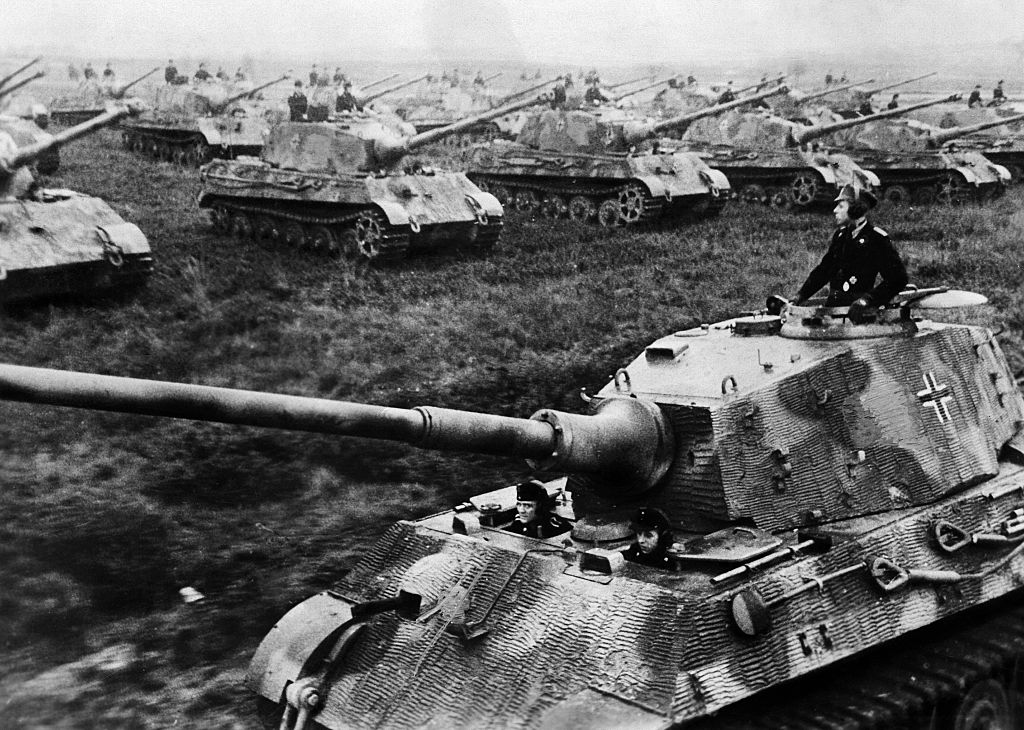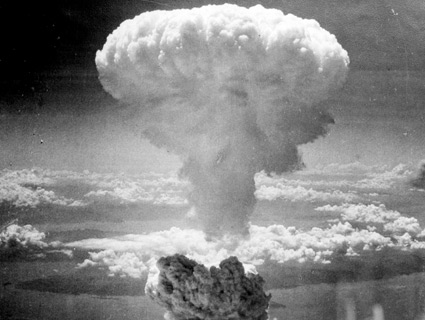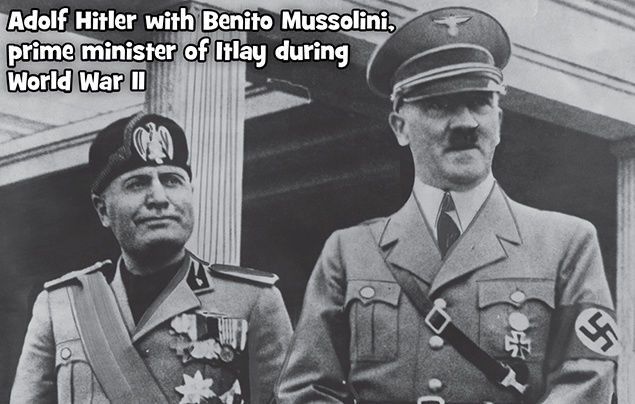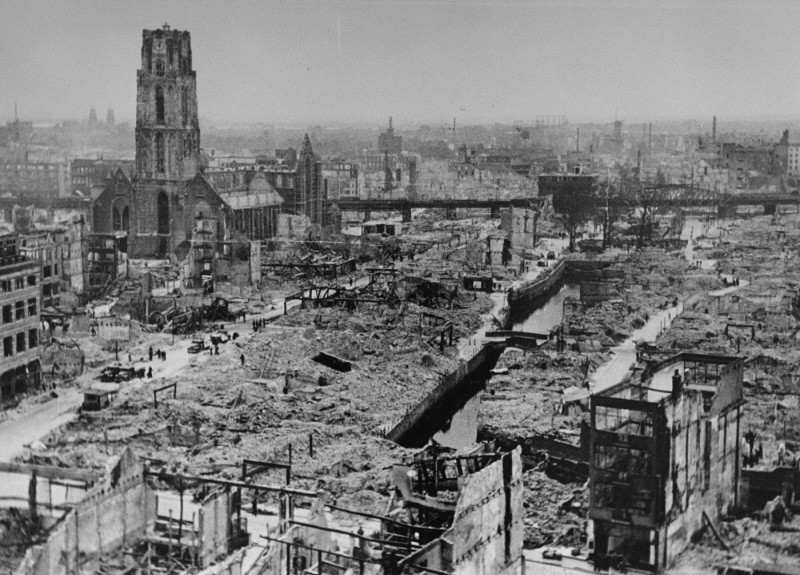World War - II, 5 December
 World War II, also called Second World War, a conflict that involved virtually every part of the world during the years 1939–45. The principal belligerents were the Axis powers—Germany, Italy, and Japan—and the Allies—France, Great Britain, the United States, the Soviet Union, and, to a lesser extent, China. The war was in many
World War II, also called Second World War, a conflict that involved virtually every part of the world during the years 1939–45. The principal belligerents were the Axis powers—Germany, Italy, and Japan—and the Allies—France, Great Britain, the United States, the Soviet Union, and, to a lesser extent, China. The war was in many
Causes of World War II:
The Peace of Paris - The treaties worked out in Paris at the end of World War I satisfied few. Germany, Austria, and the other countries on the losing side of the war were especially unhappy with the Paris Agreement, which required them to give up arms and make reparations. Germany agreed to sign the Treaty of Versailles only after the victorious countries threatened to invade if Germany did not sign it. Germany made the last payment on reparations in 2010.
The Peace of Paris - The treaties worked out in Paris at the end of World War I satisfied few. Germany, Austria, and the other countries on the losing side of the war were especially unhappy with the Paris Agreement, which required them to give up arms and make reparations. Germany agreed to sign the Treaty of Versailles only after the victorious countries threatened to invade if Germany did not sign it. Germany made the last payment on reparations in 2010.
Economic Issues - World War I was devastating to countries' economies. Although the European economy had stabilized by the 1920s, the Great Depression in the United States led to the economic downfall in Europe. Communism and fascism gained strength in the wake of economic problems.
Major Players:
The United States - Franklin D. Roosevelt, President
Great Britain - Winston Churchill, Prime Minister
China - Chiang Kai-Shek, General
Soviet Union - Joseph Stalin, General
The United States - Franklin D. Roosevelt, President
Great Britain - Winston Churchill, Prime Minister
China - Chiang Kai-Shek, General
Soviet Union - Joseph Stalin, General
US Troop Statistics:
16,112,566 - Number of US troops that served in the conflict.
670,846 - Number of US wounded.
16,112,566 - Number of US troops that served in the conflict.
670,846 - Number of US wounded.
 Other Military Casualties by Country 1939-1945 (selected):
Other Military Casualties by Country 1939-1945 (selected):Australia: 23,365 dead; 39,803 wounded
Austria: 380,000 dead; 350,117 wounded
Belgium: 7,760 dead; 14,500 wounded
Bulgaria: 10,000 dead; 21,878 wounded
Canada: 37,476 dead; 53,174 wounded
China: 2,200,000 dead; 1,762,000 wounded
France: 210,671 dead; 390,000 wounded
Germany: 3,500,000 dead; 7,250,000 wounded
Great Britain: 329,208 dead; 348,403 wounded
Hungary: 140,000 dead; 89,313 wounded
Italy: 77,494 dead; 120,000 wounded
Japan: 1,219,000 dead; 295,247 wounded
Poland: 320,000 dead; 530,000 wounded
Romania: 300,000 dead; wounded unknown
Soviet Union: 7,500,000 dead; 5,000,000 wounded
United States: 405,399 dead; 670,846 wounded
Other Facts:
About 70 million people fought in the armed forces of the Allied and Axis nations.
About 70 million people fought in the armed forces of the Allied and Axis nations.
Finland never officially joined either the Allies or the Axis and was at war with the Soviet Union at the outbreak of World War II. Needing help in 1940, the Finnish joined forces with Nazi Germany to repel the Soviets. When peace between Finland the Soviet Union was declared in 1944, Finland joined with the Soviets to oust the Germans.
Switzerland, Spain, Portugal, and Sweden declared neutrality during the war.
The Soviet Union lost the most soldiers, in excess of seven million.
 The number of civilian casualties in World War II may never be known. Many deaths were caused by bombing raids, massacres, starvation, and other war-related causes.
The number of civilian casualties in World War II may never be known. Many deaths were caused by bombing raids, massacres, starvation, and other war-related causes.
It is believed that approximately six million Jewish people died in Nazi concentration camps during the war. Also killed were hundreds of thousands of Roma people and people with mental or physical disabilities.
The Lend-Lease Act was created to allow the United States to lend or lease weapons, equipment or raw materials to any nation fighting the Axis. Eventually, 38 nations received about $50 billion in aid. Most went to Great Britain and the Soviet Union.
In 1948, the United States created the Marshall Plan to help rebuild war-torn Europe. Eventually, 18 nations received $13 billion in food, machinery, and other goods.
In March of 1974, Hiroo Onoda, a Japanese soldier still fighting the war, was found by a search party on the island of Lubang in the Philippines. After he is convinced the war is over by his former commanding officer, he is then flown to Manila and formally surrenders to President Ferdinand Marcos. Onoda died January 16, 2014, at the age of 91.
Timeline:
September 1, 1939 - Germany invades Poland. Denmark, Luxembourg, the Netherlands, Norway, Belgium, and France soon fall into German control, until only the United Kingdom is left to face Germany.
September 1, 1939 - Germany invades Poland. Denmark, Luxembourg, the Netherlands, Norway, Belgium, and France soon fall into German control, until only the United Kingdom is left to face Germany.
June 10, 1940 - Italy joins the war on the side of Germany by declaring war against Britain (UK) and France. Fighting spreads to Greece and Northern Africa.
June 14, 1940 - German troops march into Paris.
July 1940-September 1940 - Germany and Great Britain fight an air war, the Battle of Britain, along with the English coastline.
September 7, 1940-May 1941 - German bombing campaign of nightly air raids over London, known as the Blitz.
January 22, 1941 - British and Commonwealth troops take over the port city of Tobruk, Libya.
June 22, 1941 - Germany invades the Soviet Union.
September 1941 - Japanese troops invade Indochina.
December 7, 1941 - Japan attacks Pearl Harbor, destroying more than half of the fleet of aircraft, and damaging all eight battleships. Japan also attacks Clark and Iba airfields in the Philippines destroying over half of the US Army's aircraft there.
December 8, 1941 - Roosevelt delivers the "a date which will live in infamy" speech to Congress, and the US declares war on Japan. Japan invades Hong Kong, Guam, the Wake Islands, Singapore and British Malaya.
December 11, 1941 - Germany and Italy declare war on the United States.
By Christmas 1941 - Japan had taken Thailand, Guam, Hong Kong and Wake Island.
1942 - The Allies stop the Axis Powers' advance in Northern Africa and the Soviet Union.
February 1942 - Japan invades the Malay Peninsula. Singapore surrenders within a week.
June 4-6, 1942 - Japan's plans to invade the Hawaiian Islands, starting at Midway Island, but the United States cracks the code of the mission. Japan attacks Midway and loses four aircraft carriers and over 200 planes and pilots in the first clear victory for the United States.
August 19, 1942 - The battle for Stalingrad begins as Germany pushes further into Russia.
August 1942-February 1943 - US Marines fight for and hold the Pacific island of Guadalcanal.
October 23, 1942 - British troops push Axis troops into retreating to Tunisia in the Second Battle of El Alamein.
February 1, 1943 - The German troops in Stalingrad surrender, defeated in large part by the Soviet winter. The defeat marks the halt of Germany's eastbound advance.
July 10, 1943 - Allied forces land in Italy.


0 Comments